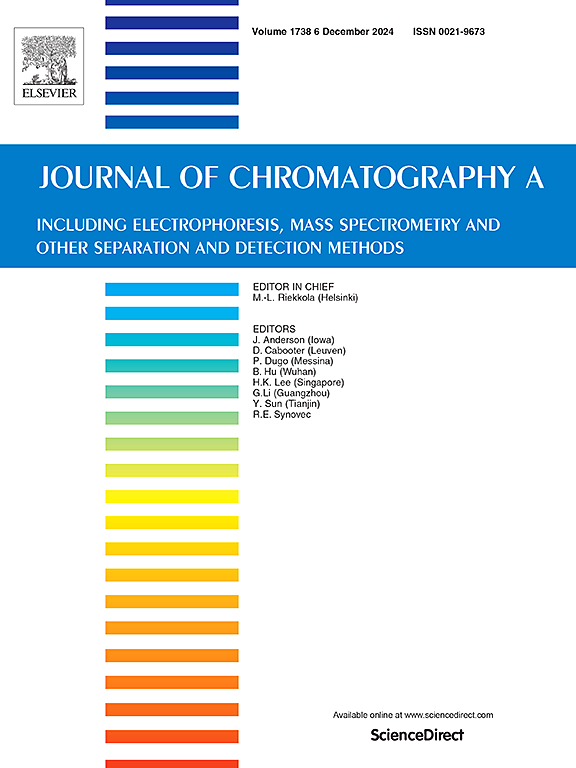In situ immobilization of covalent organic frameworks on diatomaceous earth for pipette-tip solid-phase microextraction
IF 3.8
2区 化学
Q1 BIOCHEMICAL RESEARCH METHODS
引用次数: 0
Abstract
Solid-phase microextraction (SPME) is essential for analyzing ultra-low concentration samples, such as trace drugs and environmental pollutants. Among various formats, pipette tip-based SPME (PT-SPME) stands out for its advantages in efficiency, automation, and flexibility. However, PT-SPME faces challenges such as material loss, high synthesis costs, and environmental impact. To address these issues, we developed a novel PT-SPME device by synthesizing Schiff-base covalent organic frameworks (COFs) in situ on diatomaceous earth (DE), which served as both a matrix and support. This approach significantly improved stability and reduced COFs consumption by 93.7 %. The DE@COFs were packed into pipette tips with a sandwich-like structure and used to extract polycyclic aromatic hydrocarbons (PAHs), with detection achieved through high-performance liquid chromatography coupled with fluorescence detection (HPLC-FLD). The method exhibited excellent sensitivity, with limits of detection (LODs) ranging from 2.05 to 52.5 pg/mL and limits of quantification (LOQs) from 15.0 to 159 pg/mL. It also demonstrated high accuracy, with recoveries between 87.05 % and 115.86 %, and strong repeatability, making it suitable for trace pollutant analysis in complex matrices This cost-effective and environmentally friendly PT-SPME system enhances extraction efficiency while reducing material usage, providing a practical and innovative solution for trace pollutant analysis in pharmaceutical and environmental applications.
求助全文
约1分钟内获得全文
求助全文
来源期刊

Journal of Chromatography A
化学-分析化学
CiteScore
7.90
自引率
14.60%
发文量
742
审稿时长
45 days
期刊介绍:
The Journal of Chromatography A provides a forum for the publication of original research and critical reviews on all aspects of fundamental and applied separation science. The scope of the journal includes chromatography and related techniques, electromigration techniques (e.g. electrophoresis, electrochromatography), hyphenated and other multi-dimensional techniques, sample preparation, and detection methods such as mass spectrometry. Contributions consist mainly of research papers dealing with the theory of separation methods, instrumental developments and analytical and preparative applications of general interest.
 求助内容:
求助内容: 应助结果提醒方式:
应助结果提醒方式:


